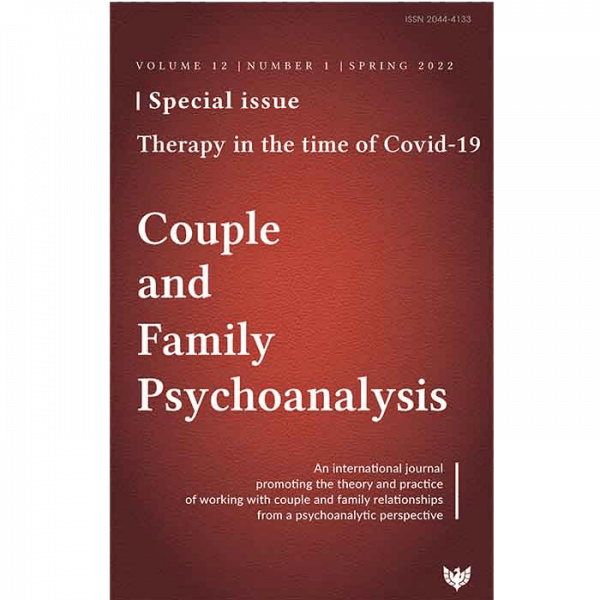‘Living with the idea of bearing a death-force fundamentally directed at oneself is hardly easy to admit. It is less so in any case than the idea that we are all murderers, that we are ever ready to plead legitimate defence or the need to survive so as to strike out at another.’ André Green, from the Foreword
André Green was a key figure in contemporary psychoanalysis, who embraced philosophy and an international outlook to enhance psychoanalytic theory. This book was one of his last works, originally published in French as Pourquoi les pulsions de destruction ou de mort? in 2012. Green’s defence of one of Freud’s most daring revisions of his drive theory remains relevant to psychoanalytic work today, and it is an honour to bring this excellent translation to the English-speaking world. To enhance its worth, the book includes an introduction from translator Steven Jaron to clarify certain technical terms and situate the book within Green’s oeuvre. This book is an important contribution to the development of psychoanalytic theory and essential reading for all trainee and practising psychoanalysts.





 André Green, French psychiatrist and psychoanalyst, member of the Paris Psychoanalytical Society (SPP), was one of the most pre-eminent figures of the contemporary psychoanalytic movement, both for his theoretical and clinical research and his role within institutions. In 1965, Green became a member of the SPP, of which he was President from 1986 to 1989. From 1975 to 1977 he was a Vice-President of the International Psychoanalytical Association and from 1979 to 1980 a Freud Memorial Professor at University College London. He was elected an Honorary Member of the British Psychoanalytical Society.
André Green, French psychiatrist and psychoanalyst, member of the Paris Psychoanalytical Society (SPP), was one of the most pre-eminent figures of the contemporary psychoanalytic movement, both for his theoretical and clinical research and his role within institutions. In 1965, Green became a member of the SPP, of which he was President from 1986 to 1989. From 1975 to 1977 he was a Vice-President of the International Psychoanalytical Association and from 1979 to 1980 a Freud Memorial Professor at University College London. He was elected an Honorary Member of the British Psychoanalytical Society.
 Howard B. Levine is a member of APSA, PINE, the Contemporary Freudian Society, on the faculty of the NYU Post-Doc Contemporary Freudian track, on the editorial board of the International Journal of Psychoanalysis and Psychoanalytic Inquiry, editor-in-chief of the Routledge Wilfred Bion Studies Book Series, and in private practice in Brookline, Massachusetts. He has authored many articles, book chapters, and reviews on psychoanalytic process and technique and the treatment of primitive personality disorders. His co-edited books include Unrepresented States and the Construction of Meaning (Karnac, 2013); On Freud’s Screen Memories (Karnac, 2014); The Wilfred Bion Tradition (Karnac 2016); Bion in Brazil (Karnac, 2017), and Andre Green Revisited: Representation and the Work of the Negative (Karnac, 2018). He is the author of Transformations de l’Irreprésentable (Ithaque, 2019) and the forthcoming Between the Silence and the Cry (Routledge).
Howard B. Levine is a member of APSA, PINE, the Contemporary Freudian Society, on the faculty of the NYU Post-Doc Contemporary Freudian track, on the editorial board of the International Journal of Psychoanalysis and Psychoanalytic Inquiry, editor-in-chief of the Routledge Wilfred Bion Studies Book Series, and in private practice in Brookline, Massachusetts. He has authored many articles, book chapters, and reviews on psychoanalytic process and technique and the treatment of primitive personality disorders. His co-edited books include Unrepresented States and the Construction of Meaning (Karnac, 2013); On Freud’s Screen Memories (Karnac, 2014); The Wilfred Bion Tradition (Karnac 2016); Bion in Brazil (Karnac, 2017), and Andre Green Revisited: Representation and the Work of the Negative (Karnac, 2018). He is the author of Transformations de l’Irreprésentable (Ithaque, 2019) and the forthcoming Between the Silence and the Cry (Routledge).
Otto F. Kernberg, MD, professor of psychiatry at Weill Cornell Medicine –
‘This volume, which offers readers a unique, impressive integration of the essential contributions of André Green to psychoanalytic theory and treatment, is an essential synthesis of major advances in psychoanalytic theory and approaches to clinical work. Starting not only with Freud’s conclusions, but with an identification with Freud’s method of thinking, Green expands the reach of Freud’s metapsychology and therapeutic approach beyond neurosis to the territory of severe psychopathology: borderline conditions, severe narcissistic structures, and the total universe of primitive psychopathologies that could not respond to the classical psychoanalytic approach. It is warmly recommended to psychoanalytic clinicians, researchers, teachers, and students.’
Evelyne Sechaud, past president, European Psychoanalytic Federation (EPF/FEP) and past president, French Psychoanalytic Association (APF) –
‘More than ten years after his death, André Green remains one of the most important thinkers and clinicians in contemporary psychoanalysis. In this volume, from the perspective of Freud’s final drive theory, Green examines the status and deepens the place of the death drive in psychoanalytic metapsychology, the clinic, and in culture and history. While the concept of a death drive may remain controversial, the fact of destructiveness is, without a doubt, at stake within most of our patients and within our society. Reading this book opens the mind to a large and modern practice of psychoanalysis and a deepened understanding of contemporary sociopolitical events.’
Christine Anzieu-Premmereur, The Psychoanalytic Quarterly, July, 2024 –
‘On the Destruction and the Death Drives sheds ample light on today’s clinical practice. It is an impressive tool for psychoanalysts interested in technical issues like the frame and the function of interpretation with difficult patients. […] The austerity of the themes and the complexity of the theory are compensated for by the clear writing, making it easy to associate with clinical practice and the impasses we can face. Green’s work addresses everrecurring human destructiveness and offers the attentive reader a hefty support when facing the negative in patients, including new thoughts and representations to make us feel more fully and clinically alive. I highly recommend this book to psychoanalysts interested in Green’s innovative ideas on our work with difficult to treat patients who pose special problems around representability.’